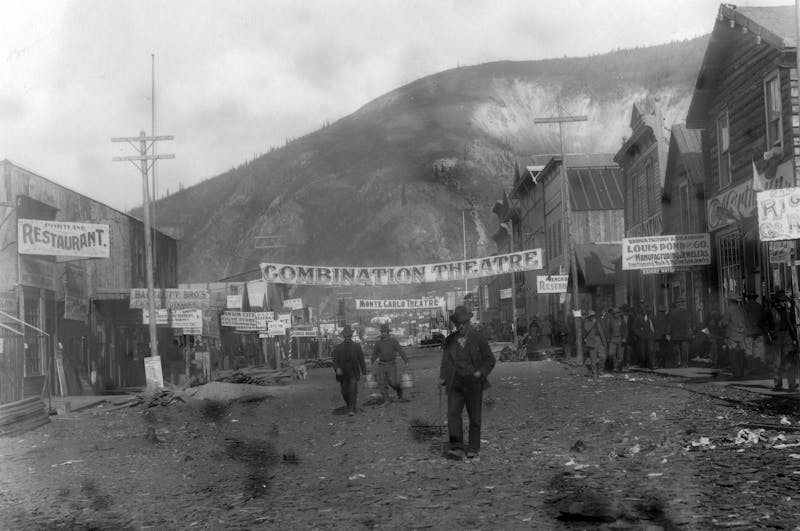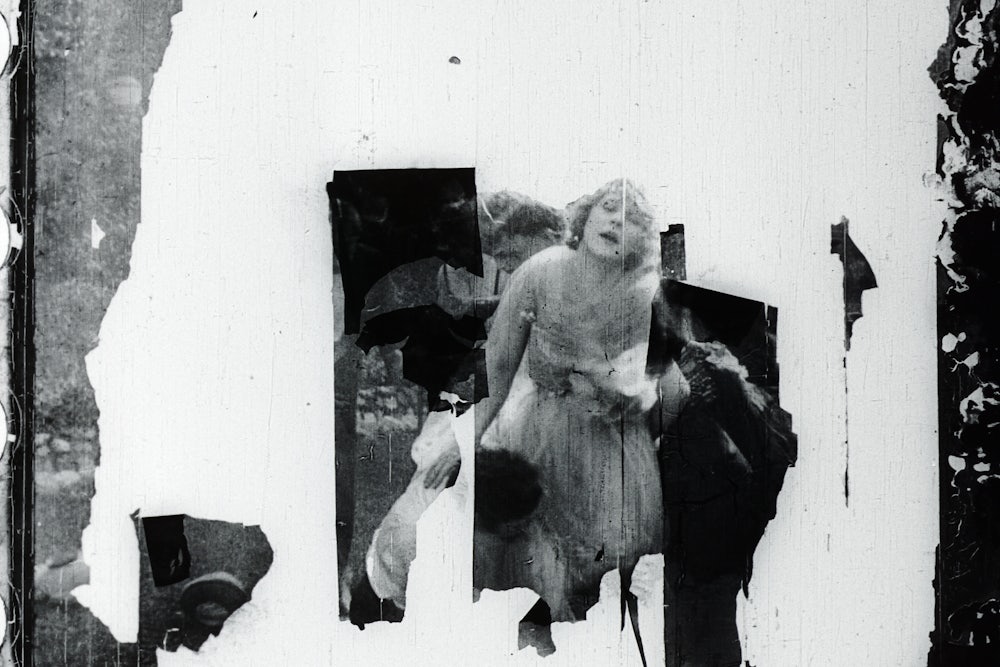Nitrate film burns. It is chemically the sister of guncotton, the old-fashioned explosive. Nitrate film has been known to spontaneously combust, and it continues to burn even if you submerge it in water. From its invention in 1889 until Kodak’s conversion to acetate base in the early 1950s, nitrate film was also the standard stock for movie prints. So, when a nitrate film print burns, a story burns with it: The reel is devoured from beginning to end, until the whole narrative has been swallowed up and each character eaten by flame.
An 1897 nitrate film fire in Paris killed 126 people, mostly women. It is estimated that 75 percent of silent film has been lost forever. Film fires feature in several movies, notably the infernos of Cinema Paradiso (1988) and Inglourious Basterds (2009). Movies are shown dying on screen, but giving life to a new narrative as spectacle. In Tarantino’s movie, that narrative takes the form of a political revenge fantasy.
A new movie tells a reversed version of this story. In 1978, 533 reels of film dating from the 1910s to ‘20s were discovered buried under a hockey rink in the Canadian town of Dawson City. As a bulldozer ate through the parking lot to build a new recreation center, the reels came up from the ground—a little like earthworms, a little like zombies—to greet a world that had changed. There, in Dawson City, permafrost had protected the film from its inclination to destroy itself.
Dawson City: Frozen Time tells the history of the town from the beginning, as if it were a biopic of a place. Moving through history, director Bill Morrison uses film from the Dawson City Collection, as it is known, along with archival footage and extraordinary still images of the Klondike Gold Rush of the end of the nineteenth century. The town itself was a little hotspot of early photographic activity. Many early glass-plate negatives were discovered inside the walls of a local cabin, after a local couple decided to dismantle their home and move out of town.
Dawson City is a town in the Yukon Territory. The colony was the end of a movie distribution line, the final stop on the stream of stories heading out to entertain far-flung viewers. Instead of shipping the films back to their suppliers, the reels went into the basement of the local library. The Canadian Bank of Commerce was their caretaker, technically.
In 1929, a local man named Clifford Thomson buried the films. He worked at the bank and with the hockey association, which was bothered by the bump in the rink caused by an old swimming pool underneath it. Thomson used the troublesome films as landfill. Earth went on top, then boards, then the ice. What was local knowledge gradually faded, until the films underground became like graves of people once loved and then forgotten.
The Gold Rush is a story of a place and time, a key narrative patch in the grand tapestry of America. Where gold came out of the ground, there the material of the silver screen entered it. As Morrison explains, the movie is a “literal time capsule of histories converging on each other, layered and self-referential, silver film having been returned to the same earth that gold was removed from.” The Gold Rush itself is also a key element in many early silent movies. In one clip featured in the movie, a proud and rageful woman laments that “there’s not enough gold in the world to bring back my happiness.”
Dawson City: Frozen Time is made almost like a silent movie about silent movies. There is no voiceover and very little speech, aside from the interviews with people who dug the movies up and transported them. (No moving company would take the reels onto their trucks, and in the end they traveled by military plane.) Minimal, atmospheric music by composer Alex Somers accompanies the film. The soundtrack is forced to do a lot of work, so it could have done with a little more drama or dynamic contrast.
But the movie’s aesthetic is uniquely beautiful. The Dawson City movies have degraded around their edges in a characteristic way. A beautiful woman might be crying in the center of the frame, or laughing. She greets you through time but also through a border of patterned decay, playing peek-a-boo from behind the parts of the movie which are lost.

There’s a movie festival in Rochester, New York, called the Nitrate Picture Show. When a filmmaker friend told me about it a few years ago, it sounded like the most magical thing in the world: actually dangerous movies. Apparently, nitrate prints are much more beautiful than the versions we are accustomed to seeing. One aficionado compared the experience of watching a Technicolor nitrate print of Black Narcissus (1947) to reading an illuminated manuscript.
It’s easy to think of movie-watching as a passive experience, one in which you sit back and the movie happens to you through the medium of light and sound. Early nitrate film did not live for long, but its fragmentary remains remind us that movies have lived a material life just as vital and animated as painting. I saw a cabinet containing nitrate reels once in the basement of the New York Historical Society, what was left of a collection that had partially burned. It was like looking at an opaque tabernacle. Dawson City: Frozen Time is a tabernacle too, but one that welcomes the viewer inside.
